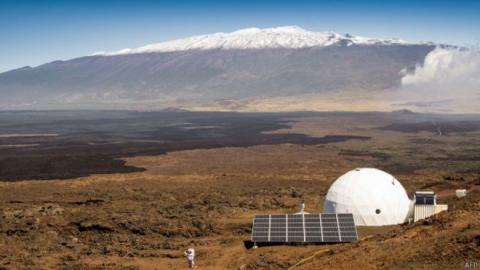NASA starts an experiment to mimic living on Mars
A German and French scientist with four Americans comprising an architect, a pilot, a soil scientist and a journalist makes up the team brought together by NASA. The women and men each will have a small cot to sleep as also a desk in their rooms. They will also be provided with food packets including canned tuna and powdered cheese. The team members can go out only when they are dressed in spacesuits and further they will enjoy only limited internet access.
Sheyna Gifford describes the team as six people who are looking to change the world by enabling people to leave the earth at will.
Tristan Bassingthwaighte, Architect says he would be studying methods of architecture for the creation of a more habitable environment and enhancing our capability of living in extreme environments of Earth as well as other worlds. He added further that he was hoping to learn a lot.
Astronauts who go to Mars will be facing a trip lasting much longer than six months which is the time span that humans spend typically at the ISS or the orbiting International Space Station.
Going by the technology available to NASA presently, it can start a robotic mission to Mars in eight months and according to the estimates of the space agency, it could take about one to three years for a human mission.
Spending long hours in cramped space with no access to food, fresh air and privacy are bound to give rise to conflicts. NASA is attempting to study how these scenarios pan out on Earth in its programme named Hawaii Space Exploration Analog and Simulation (Hi-Seas) before embarking on a trip to Mars, possibly some time closer to 2030, according to NASA.
Jaime Williams

